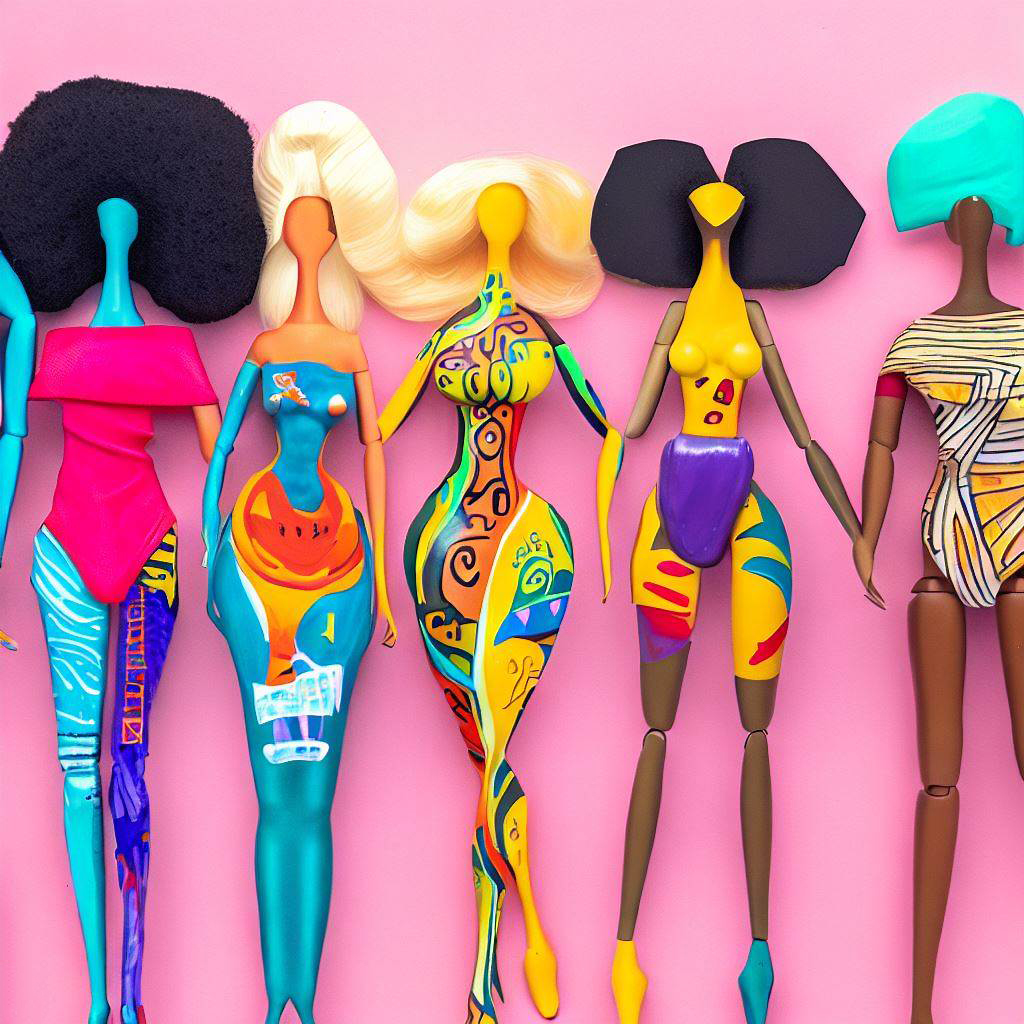Since her creation in 1959, Barbie® has been synonymous with the world of dolls and has captured the hearts of children and adults alike. The iconic toy has undergone a significant transformation over the years, with Mattel®, the brand behind Barbie, striving to reflect society’s evolving understanding of beauty and the importance of representation. This article explores the journey of Barbie’s body type evolution and its impact on inclusivity and body positivity in the toy industry.

A Brief History of Barbie’s Body
When Barbie first debuted in 1959, she had a distinct hourglass figure, with an impossibly tiny waist and long legs. This body type was considered the epitome of beauty at the time, but it perpetuated unrealistic beauty standards for young girls. As society’s perception of beauty evolved, so did the need for a more inclusive representation of body types.
In 2016, Mattel took a significant step towards inclusivity with the introduction of the “Fashionistas” line, which featured dolls with a variety of body types, including tall, curvy, and petite. This move was hailed as a positive change, with the new body types allowing for a more diverse representation of beauty.
Expanding the Line: More Body Types and Ethnicities
Following the success of the Fashionistas line, Mattel continued to expand Barbie’s range of body types and ethnicities. In 2019, the brand introduced dolls with physical disabilities, including a wheelchair-using Barbie and another with a prosthetic leg. This move was a milestone in the toy industry, as it encouraged inclusivity and representation for children with disabilities.
Auto Amazon Links: No products found. http_request_failed: A valid URL was not provided. URL: https://ws-na.amazon-adsystem.com/widgets/q?SearchIndex=All&multipageStart=0&multipageCount=20&Operation=GetResults&Keywords=B08HFD54R2|B09NMNK6SC&InstanceId=0&TemplateId=MobileSearchResults&ServiceVersion=20070822&MarketPlace=US Cache: AAL_7c8724e2882927c39e2325f4ab562936
In 2020, Mattel introduced a new line of gender-neutral dolls called “Creatable World®,” which allowed children to create their own custom characters without being confined to traditional gender norms. This line further emphasized the brand’s commitment to inclusivity and diversity.
The Impact on Society and the Toy Industry
Barbie’s evolution has had a profound impact on the toy industry and society as a whole. By offering dolls with diverse body types, skin tones, and abilities, Mattel has created a more inclusive and representative toy landscape. This change not only empowers children to see themselves in their toys but also helps them understand and appreciate the differences among people.
The transformation of Barbie has inspired other toy companies to follow suit, with brands like Lammily®, a line of dolls that promotes realistic body proportions, and the “Healthy Roots Dolls®,” which celebrate the beauty of natural hair textures.
A Toy Industry Leader Paving The Way
Barbie’s body type evolution reflects a growing awareness of the need for diversity and representation in the toy industry. As Mattel continues to expand its range of inclusive dolls, children can learn valuable lessons about body positivity, self-acceptance, and the importance of embracing differences. With Barbie leading the way, the future of the toy industry appears to be moving towards a more inclusive and representative landscape for all.
Auto Amazon Links: No products found. http_request_failed: A valid URL was not provided. URL: https://ws-na.amazon-adsystem.com/widgets/q?SearchIndex=All&multipageStart=0&multipageCount=20&Operation=GetResults&Keywords=B09NMNPV3X|B09NMQDJRZ|B09NMQMD21&InstanceId=0&TemplateId=MobileSearchResults&ServiceVersion=20070822&MarketPlace=US Cache: AAL_cbb95e6517b65c59eafb6dec1e017ef4

